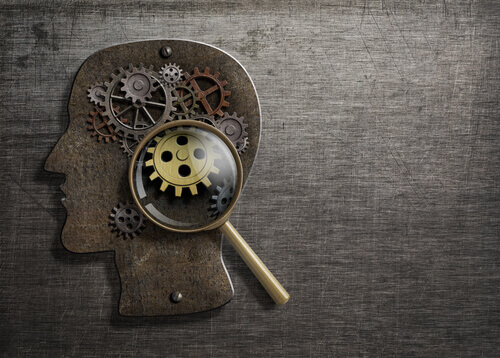The Dynamic Model of Psychoanalysis


Written and verified by the psychologist María Alejandra Castro Arbeláez
Psychoanalysis recognizes the importance of cognitive, emotional, and social aspects of mental health. It takes into account various aspects such as the unconscious, repression, and sexuality. Moreover, it uses various approaches to study humans. The dynamic model is one of them.
The dynamic model of psychoanalysis is an approach to personality that was extremely innovative at the time it was created. In fact, despite much criticism, it’s still discussed today. We’re going to explore this method and examine its importance in the field of psychology.
Certain aspects are so inherent and essential for us as human beings, we tend to avoid them. However, psychoanalysis provides another vision; one that goes beyond a static personality.
“If you want to endure life, prepare yourself for death.”
-Sigmund Freud-
The basic assumptions of psychoanalysis
- Behavior is mediated by unconscious motives. The mind has contents and processes that are inaccessible to consciousness, but that influence judgments, feelings, and behaviors. According to Freud, the unconscious mind is the main source of human behavior.
- Adult emotions have their roots in childhood experiences. The psychodynamic theory states that the events of childhood have a great influence on adult life, thus shaping personality. In fact, events that occur in childhood can remain unconscious and cause problems in adulthood.
- All behavior has a cause, even slips of the tongue. Psychoanalysis is strongly deterministic. It considers that behavior is caused entirely by unconscious factors over which we have no control. Therefore, unconscious thoughts and feelings can be transferred to the conscious mind in the form of slips of the tongue.
- The personality is made up of three parts, the id, the ego, and the superego. The id is the primitive and instinctive component of the personality. It consists of all the inherited (biological) components of the personality present at birth. The ego develops to mediate between the desires of the id and the restrictions of the superego. The superego incorporates the values and morals of society learned from parents and others.
The dynamic model of psychoanalysis
Sigmund Freud, the father of psychoanalysis, was a doctor and neurologist, as well as a great writer. This author not only approached the subject of sexuality, as many tend to believe. In fact, one of his theories is related to personality. To address personality, he used the following models or topics: topographic, structural, genetic, economic, and dynamic.
The dynamic model of personality consists of the mechanisms that are produced in the individual’s mind and that are characterized by being in motion. In effect, they’re in constant flux: those that seek inhibition and those that seek gratification. The model encompasses the conflict between forces that occur in our minds.
There’s a psychic dynamic that regulates us so that we can adapt. In this model, Freud suggests that mental health depends on the defenses and self-sanctions we possess and is conditioned by the gratification of our impulses.

Defense mechanisms according to the dynamic model
The psychic dynamic that tries to make us adapt is known as a defense mechanism. It’s one of the components of the dynamic model of personality, according to Freudian psychoanalysis. Defense mechanisms are the ways we have of dealing with our anxieties. They may arise from various factors. There are several defense mechanisms. For example:
- Repression. We use it mainly to encapsulate what we find unacceptable, trying not to contaminate the rest of our actions or thoughts.
- Displacement. The mechanism in which the emotional charge of a source is redirected toward another that’s considered to be more admissible by our conscience.
- Reaction formation. It occurs when we adopt the opposite impulses to those we’re experiencing.
- Splitting. The division of our psyche into both acceptable and unacceptable areas.
- Projection. Transferring the unacceptable to another subject or situation.
- Regression. Fleeing and presenting characteristics of a previous evolutionary state.
These are just some of the defense mechanisms formulated by Freud. However, there are many more. For example, sublimation, denial, introjection, humor, compensation, isolation, intellectualization, fixation, rationalization, etc.
The importance of the dynamic model of psychoanalysis
The dynamic model of psychoanalysis was and continues to be essential in the field of psychology. Indeed, from its conception, the ideas of defense mechanisms were adopted and various psychological currents continue to use this term today.
The dynamic model is no longer addressed in such a complex way as before. That said, it’s generally recognized that we use certain processes to evade our anxieties and that these processes usually follow unconscious pathways.
Anna Freud wrote a book entitled, The Ego and the Mechanisms of Defense, in which she continued to explore this theory. Such was its scope that other theoretical approaches to psychology also emphasize these mechanisms, although from another perspective. For example, cognitive psychology.
Today, there’s a long list of defense mechanisms. They probably wouldn’t even exist without the contributions of Sigmund Freud.
Undoubtedly, defense mechanisms are one of the legacies that Freud left us. Thanks to him, we recognize these processes that help us behave acceptably and make our lives more balanced. That said, they can also be double-edged swords that help us hide what our consciousness sees as unacceptable.
All cited sources were thoroughly reviewed by our team to ensure their quality, reliability, currency, and validity. The bibliography of this article was considered reliable and of academic or scientific accuracy.
- Fernández, L. (2018). Sigmund Freud. Praxis Filosófica, (46), 11-41.
- Freud, A. & Carcamo, C.E. (1961). El yo y los mecanismos de defensa (vol 3). Barcelona: Paidós.
- Vels, A. (1990). Los mecanismos de defensa bajo el punto de vista (vol 6). psicoanalítico. Agrupación de Grafoanalistas Consultivos de España.
- Lacan, J. (2010). Seminario 1. Los escritos técnicos de Freud. Balint, 2, 6-54.
- McLeod, S. A. (2017). Psychodynamic approach. Simply Psychology. www.simplypsychology.org/psychodynamic.html
This text is provided for informational purposes only and does not replace consultation with a professional. If in doubt, consult your specialist.








